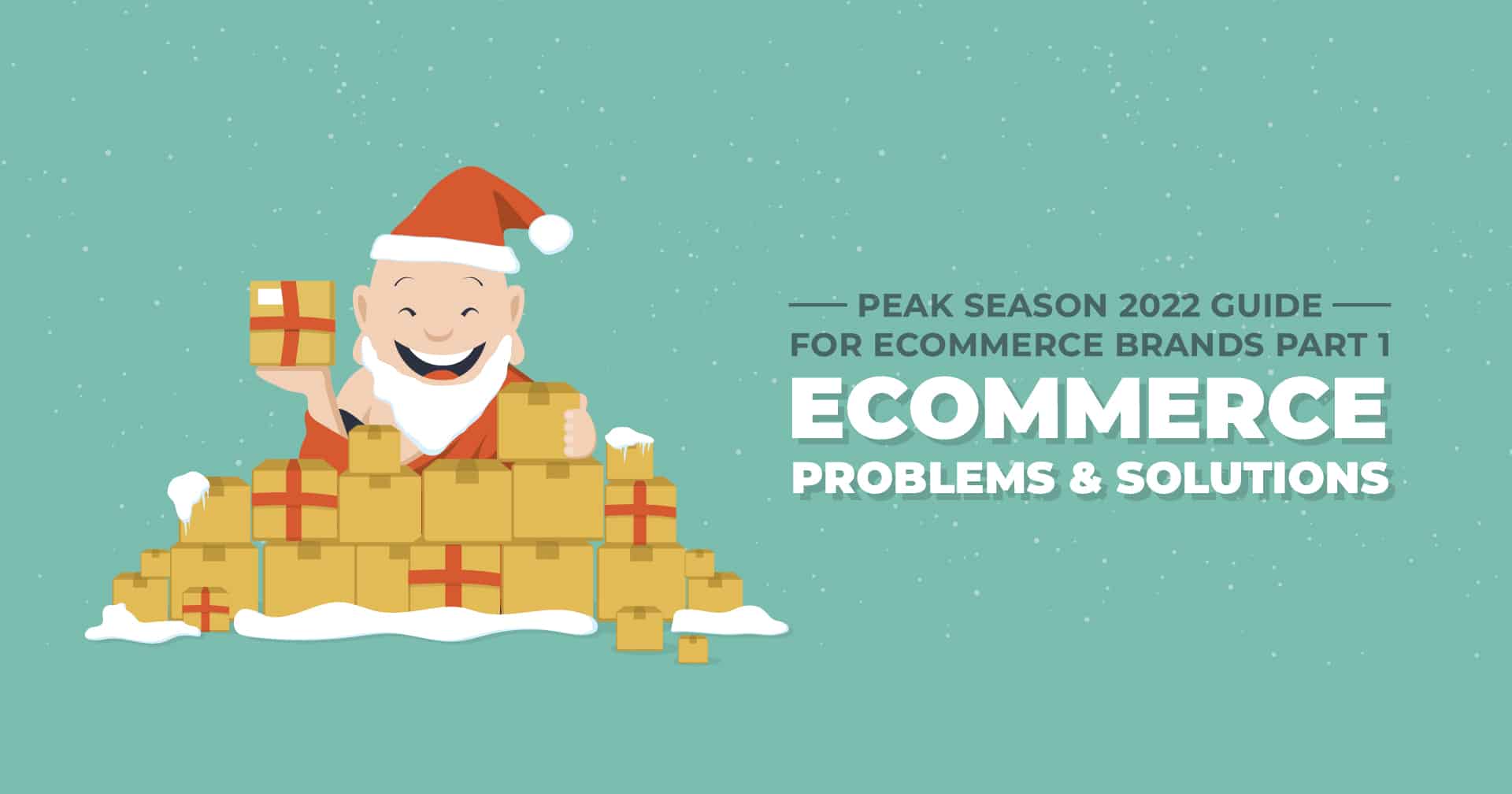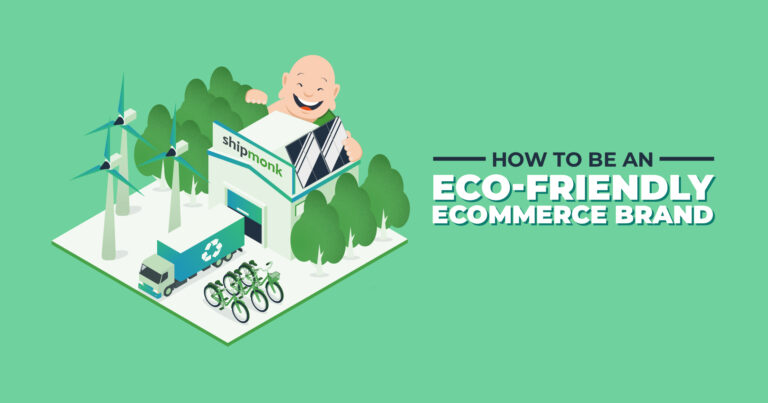Peak Season 2022 Guide for eCommerce Brands PART 1
eCommerce Peak Season Problems and Solutions
Peak season didn’t get its nickname because of people trying to get a peek at their gifts around the holidays. Peak season is characterized by the increased demand across markets that causes businesses to amp up production and have large amounts of stock ready for holiday orders. The stakes are high, the challenges are varied, and the volume of inventory—and things to do—can be overwhelming
The surge in eCommerce purchases made during this period has the potential to lead to great profits for your brand and great experiences for your customers. But that’s only if companies address eCommerce peak season problems with skill and swiftness. In this article, aptly prepare for the most important time of year in the direct-to-consumer (DTC) market by learning about the problems at your door, and more importantly their solutions.
When Does Peak Season Start?
Your customers like to buy in advance. According to the National Retail Federation, last year 6/10 shoppers were already making holiday purchases by the start of November. Also, though the shipping world is significantly more efficient than in the depth of 2020 or even 2021, supply chains still have a tendency to run slower and there are plenty of other factors that can slow your eCommerce brand’s plans for holiday superiority. Given all that, peak season planning begins for many in late summer to early fall in anticipation of eCommerce orders and the shipping industry being at full force for the holidays.
Keep in mind that the major US holiday milestones that approach as autumn 2022 kicks in are:
- Halloween (October 31)
- Thanksgiving (November 24)
- Christmas (December 25)
- New Years Day (January 1)
Meanwhile the major sale-specific special occasions are:
- Black Friday (November 25)
- Small Business Saturday (November 26)
- Cyber Monday (November 28).
So, overall, peak “ordering, planning, get your business in order” season is around August – October while November – December is characterized as peak “shipping” season. Specifics can vary by industry, of course, but for the most part this takeaway is a good summation.
Common Challenges & Solutions During Peak Season
Rapid spikes in demand on their own can cause eCommerce brands some trouble. It gets way worse if you factor in problems with suppliers, increased shipping costs, and labor shortages. However, there are ways to alleviate the pain points of all three main peak season problems and, thus, set up your eCommerce business for success.
1) Supplier Issues
Problem: There are many reasons a supplier could hinder your perfect peak season plans—delaying your inventory and leading to stockouts and backorders. Maybe your manufacturer has a shortage of materials. Maybe there are trade or customs restrictions that hold your shipments up at borderlines. Maybe there are planned factory shutdowns for holidays or unplanned shutdowns like in the case of Covid. Or maybe it’s just a matter of your supplier being overwhelmed and that ripple effect causing delays. Regardless of the cause of the supplier problem, the point is supplier problems happen. So how do you combat them?
Solution: Every plan needs a backup plan. In order to protect your eCommerce brand against disruptions caused by supplier delays, work with multiple suppliers or manufacturers so you have options if something goes wrong. This will reduce the risk of running out of inventory, or getting backed up on orders that your customers expect to get on time now more than any other season of the year. If you have suppliers that are firing on all cylinders, it may not hurt to also order more inventory from them in advance to create a buffer for peak season.
2) Shipping Costs
Problem: With so many eCommerce orders to fill, shipping services are commonly more expensive at this time of year. Since Covid, the trend of shipping surcharges during peak season has continued with major carriers hiking up shipping fees in terms of price and timelines. At a glance:
**FedEx will see a rise in shipping rates for residential deliveries during peak season 2022—shipping carriers increasing rates to make up for the more costly, less efficient DTC vs. B2B eCommerce orders of peak season. Those higher shipping rates will likely continue into 2023. Additionally, several surcharges for Ground services, Ground international, and US express shipping will run from October 3, 2022 through January 15, 2023.
**UPS will have peak season shipping surcharges go into effect on October 2, 2022 that affect International shipments and US Domestic shipments across the board.
**USPS announced shipping surcharges launching on October 2, 2022, which will impact the rates for commercial and retail domestic competitive parcels (including Priority Mail, Priority Mail Express, Parcel Select, Retail Ground, Parcel Return Service, and First-Class Package Service).
**DHL will implement its own peak season shipping surcharges to account for holiday orders and holiday returns. These surcharges will be broken into two rounds of effective dates: October 2, 2022 – November 12, 2022 and December 18, 2022 – January 21, 2023.
This is a lot to take in, but know that it’s not just the major shipping carriers adjusting prices for peak season. Some companies and 3PLs (including Amazon) are implementing peak season fulfillment fees. Such fees could be based on location of delivery, as mentioned. Other factors that could play a part in your shipping costs include if there are oversize or heavy items being shipped, or if eCommerce orders are delicate and require extra careful handling.
Solution: It’s not that surprising that shipping carriers, certain 3PL partners, and even companies themselves would increase their shipping rates during peak season. There’s an immense amount of orders they have to handle, issues with supply chains that need to be overcome, and of course they have to contend with an ever-growing demand for faster delivery that burns in the hearts of eCommerce customers. Surcharges help maintain operating costs and standards to keep up during this exceptionally busy period. That being said, while you can’t finagle around these shipping surcharges, your eCommerce brand can prepare by working with your own pricing team to ensure the extra costs don’t overly impact your bottom line.
One viable option is to raise the shipping fees on your eCommerce website. If you offer free shipping, implement a higher threshold customers must reach (i.e. spend) to earn that luxury. You could also adjust the prices of your products slightly to build in the added shipping cost you have to pay yourself; in that case you’re asking your customers to spend more on a product they want vs. shipping, which can be a more digestible ask. Another option is encouraging customers to select slower shipping speeds to keep your shipping surcharges down from the start. Given that shipping costs more depending how many shipping zones an eCommerce order travels through, consider working with regional shipping carriers or 3PLs that have plenty of fulfillment centers in key areas.
3) Labor Shortages
Problem: The pandemic left a new problem in its wake—a lack of people in the workforce. Most industries have struggled in the last year to fill positions they need in all sectors of labor. It has proven just as difficult to retain workers as well. The U.S. Chamber of Commerce noted in a census that 65% of positions in the retail sector are vacant as of June 2022. This labor shortage creates difficulties for all aspects of the eCommerce business supply chain, those pain points inflaming extra around peak season when having as many hands on deck as possible matters most. Fewer workers means products take longer to produce and orders take longer to fill, all contributing to backorders, frustrated customers, and potential lost profits.
Solution: Regrettably no one can wave a magic wand and make reliable employees appear. However, in terms of strategies to offset the surge of orders expected for peak season 2022, dedicate efforts and advertising dollars now to promote the roles you need filled, and focus on hiring “seasonal employees” who are expected to contribute only during the periods of peak that require extra labor. The sooner you beat your competitors to this, the better. Additionally, working with a 3PL fulfillment provider can help lighten your seasonal load tremendously with fine-tuned automation and custom robotics.
For example, the AMRs (Automated Mobile Robots) ShipMonk utilizes reduce the need for some of the work common to manual warehouse labor. These sophisticated robots move around our fulfillment centers on their own—retrieving orders quickly and taking them to be packed. ShipMonk also harnesses the power of automation and advanced 3PL software to process your eCommerce orders quickly and accurately, and our state-of-the-art 3PL fulfillment facilities are optimized to get orders out the door and off to shipping carriers as efficiently as possible.
Peak Season 2022 and Beyond!
Supplier issues, shipping costs, and labor shortages aren’t just issues around the holidays; they’re legitimate challenges eCommerce brands have to contend with all the time. These pressure points just become more obvious when you turn up the heat i.e. turn up the order volume, competition, and high stakes for fast, flawless delivery. But, for every ailment there is an antidote, for every question there is an answer, and for every problem there is a solution. You just have to put in the work to find the right one.
For peak season 2022, there are plenty of workarounds to the problems eCommerce brands are facing. They may not cure everything like a magic elixir, but with the right strategy, preparation, determination, and 3PL partner, resilient eCommerce businesses can get through anything. Contact our 3PL team now to get started and check out PART 2 of our “Peak Season 2022 Guide for eCommerce Brands” for tips on best practices for peak season 2022!



